I wonder why more people don’t make crepes at home. Maybe the French name implies some kind of mysteriously intimidating technique. But really crepes are as easy to make as pancakes and so much more versatile. Fill it like an omelette with savory fillings such as cheese, meat, vegetables. Or, if your inclinations run sweet, it’s hard to beat a Nutella and banana crepe dusted with powdered sugar.
In our household, crepes are especially handy as a special last-minute dessert. The ingredients – flour, eggs, milk – are ones I always have on hand. The simple batter mixes up quickly, and cooking the ultra-thin pancakes is even quicker. Easier to make than cookies, crepes seem so much more special. Maybe again it’s the French mystique.
Traditional crepes from the Brittany region in France are made with buckwheat flour, and this type of batter is usually used for savory crepes, called galettes. Not a grain at all, buckwheat is gluten-free, and though galettes are often made from a mix of buckwheat and white flour, it is easy to make a gluten-free crepe by substituting all buckwheat flour or a mix of buckwheat and other gluten-free flours.
Mixing crepe batter ahead of time is not only handy but preferred. Many recipes call for crepe batter to rest for 15 minutes to overnight before cooking. This may make a big difference for buckwheat flour, but since I don’t usually plan ahead I cook white flour crepes right away without any issues. I also mix the batter by hand, which creates less air in the batter than mixing in the blender.
I love the idea of savory crepes, but we can’t seem to get past our Nutella-banana favorite. I’ve only recently realized that some people can’t stand bananas (my sister-in-law, the Pioneer Woman). And locavores don’t eat bananas on principle, since unless you live in Hawaii or maybe Florida there are no local-grown bananas in the United States.
For my kids, bananas in crepes are pretty much a must. But we also like Nutella crepes with strawberries, and my five-year-old likes his plain with a bit of maple syrup on the side. This time of year, I’d love some sauteed pears. But in reality what I eat is leftovers of the my kids’ third Nutella banana crepes that they insisted they had room to eat.
There are really only two secrets to crepes:
- Whisk in wet ingredients gradually to avoid lumps in the batter, and
- Make small crepes in a small skillet (no need for special pan or batter spreader).
You can also throw the ingredients in a blender – just pulse to mix so your batter doesn’t get foamy. Call me a Luddite, but I like mixing by hand. Usually I’m pretty casual about lumps in my own batter, but I didn’t want lumps in yours. So I tested three more half-batches to make sure your batter would be smooth as cream.
Ingredients couldn’t be more basic: flour, milk, eggs and, not pictured, a pinch of salt and a bit of butter. Some poeple, like Mark Bittman, use milk only; others, including Alton Brown, use a thinner mix of milk and water. The traditional Hungarian method is a mix of milk and soda (carbonated) water. It all works.
The trick to avoiding lumpiness in the batter is to mix in the liquids gradually. You can do this in two ways: 1) mix eggs into the flour first, then add the milk and melted butter gradually, or 2) mix the eggs and melted butter with the milk, then gradually whisk in the liquid mixture to the flour. I’ve tried both, and they work equally well. But I’ll just show the second method to keep things brief. I started with a fork for the egg-first method, but I decided the whisk works better.
Finished batter should be the thickness of heavy cream.
Now to cook. I’ll usually fill the crepes at the stove so that the Nutella gets melty. It would be more efficient to have the kids fill their own crepes on a plate, but I like to serve them warm off the skillet.
Ladle in 2-3 tablespoons of batter. I have a small 1/4-cup (4 tablespoon) ladle that I fill part way, but you could just as easily use a 1/4 cup measure. Heat the skillet enough that a drop of water immediately sizzles away.
A small skillet helps to make a nicely round crepe. Mine is an 8″ cast iron.
Be ready as soon as the batter goes in to tilt the pan and spread the batter. I need my homely-but-handy Ove-Glove to grasp the hot cast-iron handle.
When the crepe is looking dry on top and crisp at the edges, flip over. The first crepe is usually less than perfect, but it makes a great treat for the cook.
The second side needs barely any time to cook. I add my filling right away and fold over. But if you’re nervous about burning the crepe, it’s safer to fill the crepe on a plate.
Fresh fruit nestled in the gooey Nutella, wrapped in a warm crepe: an easy dessert with a certain je ne sais quoi. Also delicious with a simple jam filling, or even peanut butter and banana for an American take on a French classic.
Leftover batter keeps well in fridge for two days, so you can whip up a special treat anytime. Just give it a quick stir when you’re ready to cook up a fresh batch.
More about crepes – from blogger David Lebovitz in Paris
Nutella Banana Crepes
Crepe recipes are pretty basic – egg, flour and enough liquid to thin out the batter. I’ve used Mark Bittman’s all-milk basic crepe recipe for years, but this one is closer to Alton Brown’s, which uses a mix of water and milk.
Crepe ingredients
- 1 cup all-purpose flour
- Pinch salt
- 2 eggs
- 3/4 cup milk
- 1/2 cup water
- 2 tablespoons butter, melted
- 1 teaspoon vanilla, optional
- Oil or butter for pan
Filling ingredients
- Nutella
- Banana
- Powdered sugar
Directions
- If using blender, pulse crepe ingredients together to mix.
- If mixing by hand, add flour and salt to a mixing bowl. Separately, mix egg, milk and melted butter. Add liquid gradually, whisking well to eliminate lumps. Batter should be the thickness of heavy cream.
- If desired, rest the batter for 15 minutes to overnight.
- Heat a small (~8″) skillet until drop of water sizzles. Grease lightly with butter or oil. Pour 2-3 tablespoons of batter in pan (use a 1/4 cup measure partly full – it’s 4 tablespoons). Immediately tilt pan to coat pan with batter. Pour back in bowl any extra batter.
- When top of crepe is looking dry and edges looking crisp, flip crepe with a pancake turner. The second side cooks very quickly. Remove to plate. Depending on the stickiness of your pan, you may or may not need to grease the pan between crepes.
- Spread a couple of tablespoons of Nutella down the center of the crepe and top with a few slices of banana. Fold one side of the crepe over the center, then the other. Dust with powdered sugar and serve immediately.
Notes
- It takes a crepe or two to get the heat adjusted properly and everything working smoothly. So the first imperfect one(s) are cook’s treat.
- For a gluten-free version, substitute buckwheat flour for the all-purpose flour, or a mix of 3/4 cup buckwheat flour and 1/4 cup gluten-free flour blend.
- If making ahead, keep crepes warm in a 200 degree oven.
- Batter keeps well in refrigerator for two days. Stir before using.
Here’s the link to a printable version.


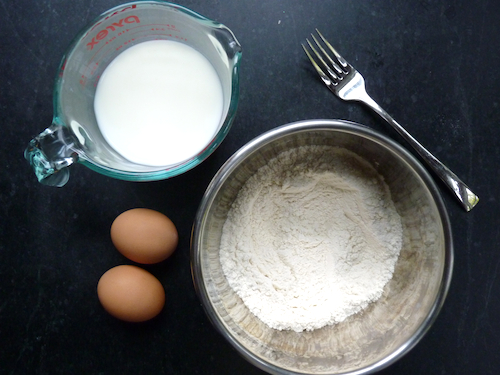
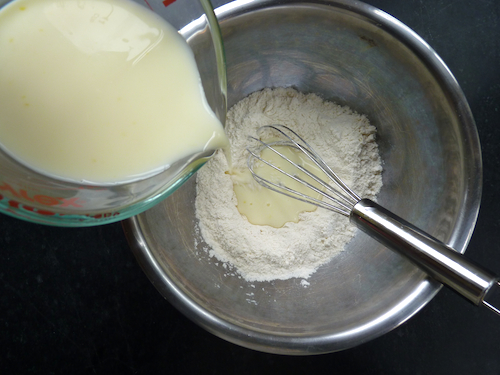
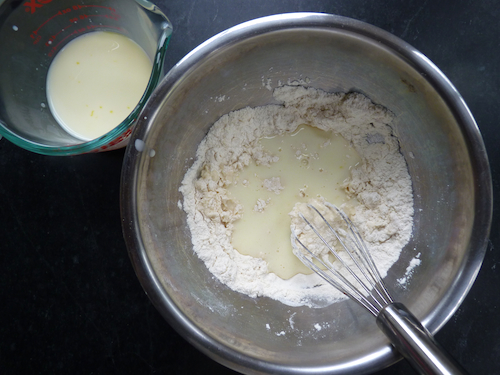
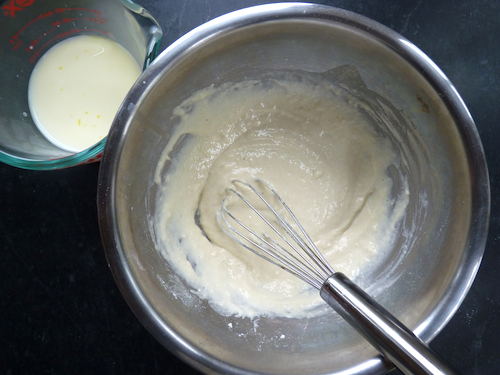
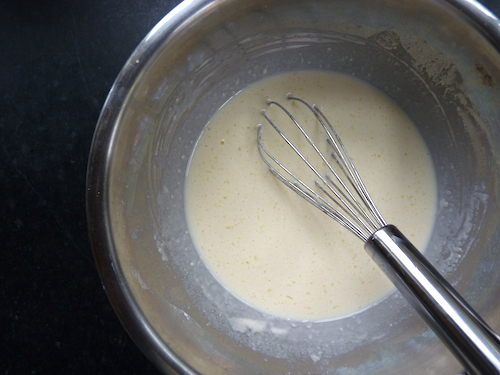
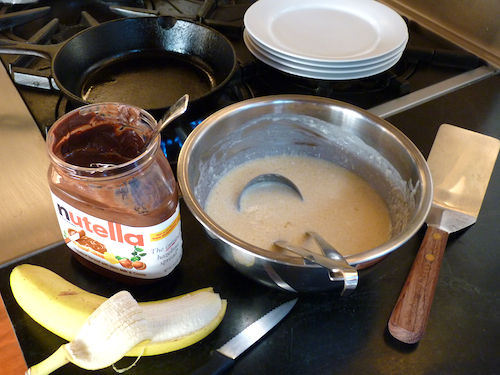
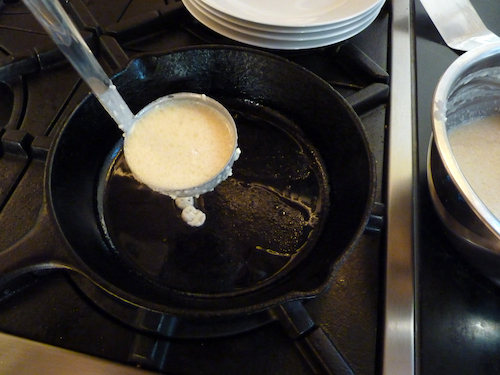
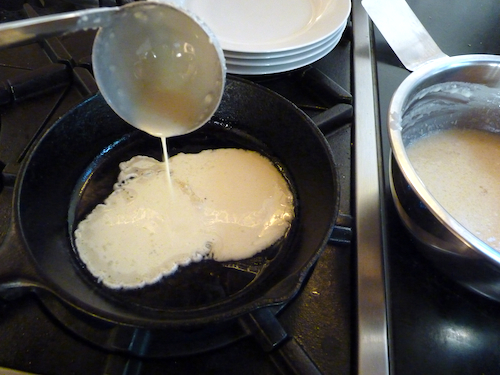

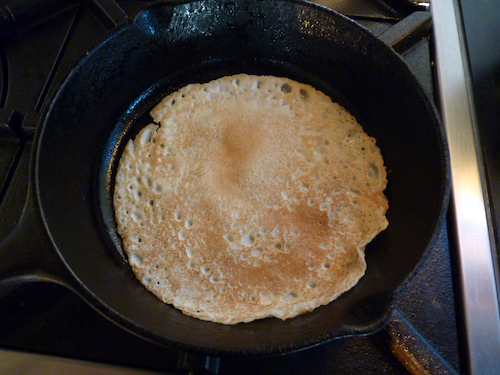
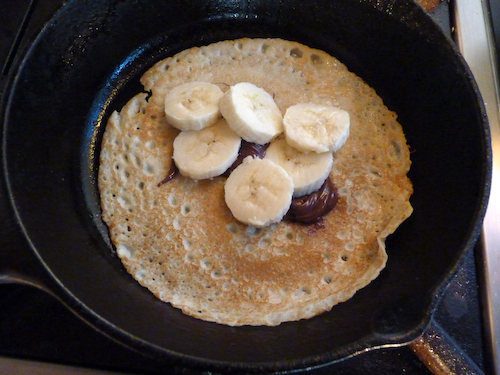
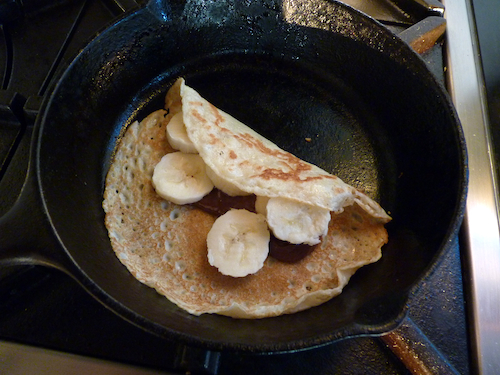
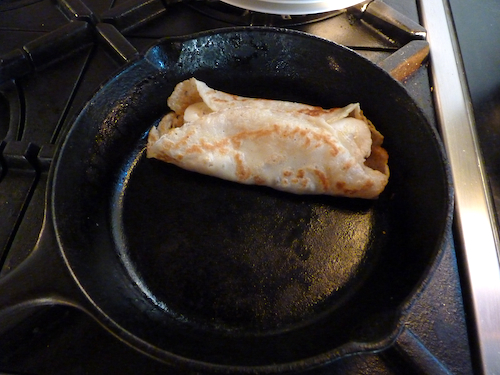


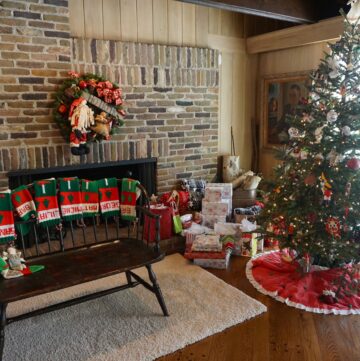
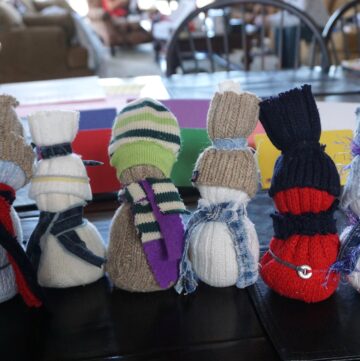

Impressive! I’m too intimidated to try to make crepes.
I absolutely love crepes but have never made them at home before. You make it sound easy enough that I think I will give it a try. Thanks for sharing!
hi kristen – let me know if you try them!
Dear Grandma & friends,
I make tons of crepes, this is what i do the basic French way, nothing fancy in the making. Mix your batter and use the blender all ingredients in, liquid first and blend up, or whisk but get rid of those lumps (you’re not making American pancakes), it should be very loose, smoothe & runny and only take few minutes, add more milk if necessary and let it set to coagulate those glutens, 20 mins. or overnight in fridge then mix again before cooking. Get yourself a flat cast iron skillet (1/2″ edge) or even two for speed (Loge or other $9-$12 hardware store), turn heat up 3/4 high, put a fitted hot pad on the handle away from flame and let heat for 20 mins. Butter the pan lightly all over, first crepe may stick, Chef’s treat! When you pour in your crepe batter, tip & round the pan so the batter goes to the edges, it’s heavy but you can do it. 1/4 c. batter per crepe should do it and may even be a bit too much, but keep tipping the pan until all the wet batter fills to the edges and dries up. Remember the batter has butter in it so shouldn’t need to butter pan much. Watch for bubbles and when the edges start to separate from the pan check underneath for brown-ness and turn over, either with spatula or slide off with hand & rounded butter knife/frosting knife or chopstick (may be hot, careful) and flip over. The better looking side is the “public” side that you want showing when serving. If you use the cast iron, you can even make them over campfire. You can also make a great crepe with green onions sliced Asian style and sprinkle some on the pan then pour little less than 1/2 c. of the batter over onions and voila! I substitute light olive oil and a little sesame oil for the butter. Takes a little longer to cook but it’s great. Dip in pot sticker sauce, serve with rice, yum! (dip: soy, sesame oil, sugar, salt, ginger, green onion, rice vinegar, water) Grandma have you ever made the onion crepes?
hi lili – i have never made the scallion pancake with crepe batter – my mom makes the thicker chinese type. but what a great idea – i’ll have to try it. thanks for taking the time to share your tips!
Hi cg ~ One green onion crepe can be a meal for a person if you make it thick enough, using just over 1/4 c. batter, though my husband eats 3 and is skinny as can be ~ I hope you try them, if you make them like a french crepe, it’s less oily than the chinese type and i think less work too… maybe even add 1 more egg in the batter, I like mine with a little salad, enjoy!